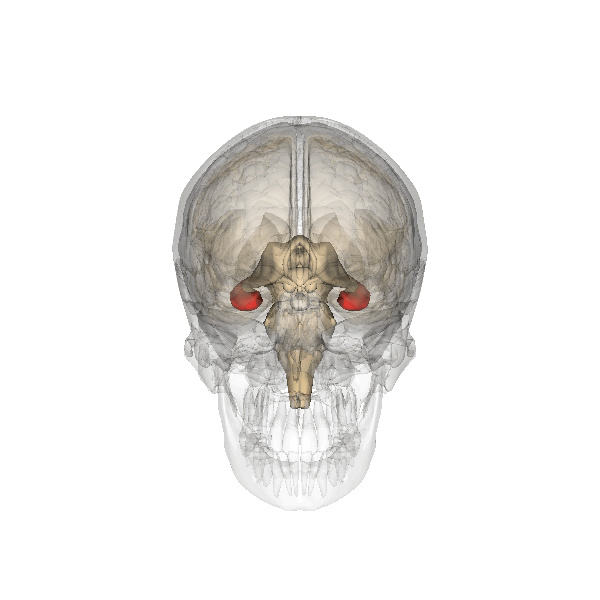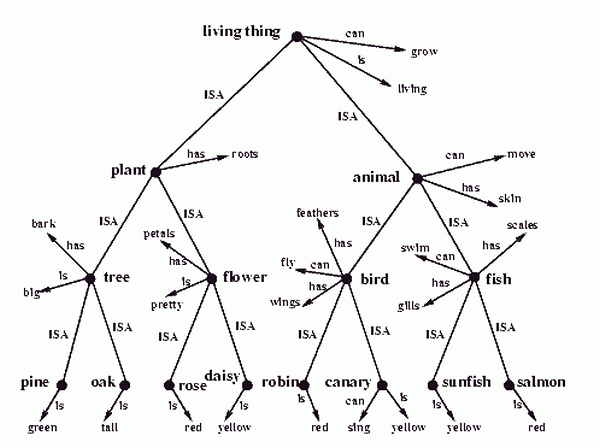Insight #8: Declarative Memory - how is our knowledge stored?
How does psychology understand the functioning of human memory? In today's Insight we will take a look at declarative memory - one of the main types of memory we use.
Declarative Memory

Hippocampus - the most important brain structure involved in declarative memory
image srouce
Declarative memory stores information that can be extracted regardless of the context, which is required with non-declarative memory (e.g. the memory of how to ride a bicycle requires a bike to recall), but in contrast to unconscious memory, recall of information requires some effort from us. When you are "looking" for something in your memory, you try to recall some information during the exam or the sequence of some events (usually lifting your eyes slightly and looking at an angle) - then you are using the declarative memory. In other words, it can be said that it stores "knowledge", i.e. some learned or involuntarily memorized information. During sleep, this is precisely a declarative memory that is being consolidated, that is reorganized and properly structured, which in effect selects what will be remembered and what will be forgotten.
Now let's look at two open memory subsystems - semantic memory and episodic memory.
Semantic Memory
Semantic memory includes abstract general knowledge of the world gathered throughout life. As the name indicates, it is easily verbalised. It concerns symbols (e.g. words) and their meaning (representation of words in the world). When we think "Backpacks are worn on the back", we bring out from the semantic memory the knowledge about the functions of backpacks, as well as about the written representation of this sentence. This memory also includes the relationship between symbols and all the rules that govern these relations, i.e. classes and subclasses of objects. So we know that the backpack may or may not belong to the traveller's outfit, but it certainly belongs to the class of items that can store other objects in it. Thus, this memory is the result of a certain social consensus, and to a small extent it concerns personal experiences. For this reason it is also strongly culturally dependent, for example the source of wind will be something different for an educated European than for a native inhabitant of the Amazon tropical forest.

Hierarchical semantics of concepts depicting the structure of semantic memory.
image source
Episodic Memory
Episodic memory is not as abstract as semantic and it's manifesting much earlier in human development, even before gaining the ability of speech. It deals with information about specific events that took place in a given time and space. It therefore needs a context - knowledge of certain episodes must include cause-effect relationships and appropriate sequencing, as well as information about spatial relationships between those episodes. Due to the fact that it is not so connected with a semantic language, the way in which we verbalize the content of episodic memory depends on how much we can translate imaginary images of events into words.
Autobiographical memory is a specific type of episodic memory that concerns episodes from our lives. When we think about when we were at school, what was going on in our home at that time or when we were going on holiday, we will use autobiographical memory. However, when we talk about an event that we did not see, but learned about it from our friend, we also use the episodic memory, but not the autobiographical one. This is because autobiographical memory is "recorded" thanks to the so-called autonoetic consciousness, a special type of consciousness that concerns the sense of self and placing it in the subjective experience of time flow.
Explict memory is much more susceptible to distortion and forgetfulness than non-declarative memory. This is particularly true for episodic memory, so it may turn out that two adult siblings, for example, who had an accident in their childhood, remembered the event completely differently. One may remember that the accident involved a clash with a tree, and the other may have been a clash with a staircase. One may say that they were then on riding a kart and the other that they were on a tandem. One may remember that the parent did not react negatively to an accident and the other may remember that they were furious and so on. This is due to the fact that with every remembrance of events, they are somehow reconstructed and not "replayed". And with such a reconstruction, some distortions and errors always slip in.
In this way (briefly) explict memory is conceptualized. In the next Insight we will look at non-declarative memory, also knowk as unconscious memory, which seems to be much more interesting than declarative memory!
Literature
Jagodzińska, M. (2008). Psychologia pamięci: badania, teorie, zastosowania. Helion.
Nęcka, E., Orzechowski, J., & Szymura, B. (2006). Psychologia poznawcza. Academica Wydawnictwo SWPS.
Saumier, D., & Chertkow, H. (2002). Semantic memory. Current neurology and neuroscience reports, 2(6), 516-522.
Tulving, E. (1972). Episodic and semantic memory. Organization of memory, 1, 381-403.
Previous entries in the Insight series:
SteemSTEM is a community driven project which seeks to promote well written/informative Science Technology Engineering and Mathematics postings on Steemit. More information can be found on the @steemstem blog. For discussions about science related topics or about the SteemSTEM project join us on steemSTEM chat.



DISCLAIMER: dropahead Curation Team does not necessarily share opinions expressed in this article, but find author's effort and/or contribution deserves better reward and visibility.
to maximize your curation rewards!
with SteemConnect
12.5SP, 25SP, 50SP, 100SP, 250SP, 500SP, 1000SP
Do the above and we'll have more STEEM POWER to give YOU bigger rewards next time!
News from dropahead: How to give back to the dropahead Project in 15 seconds or less
Quality review by the dropahead Curation Team
According to our quality standards(1), your publication has reached an score of 85%.
Well said Gabriel García Marquez: "You learn to write by writing" Keep trying, you will soon achieve excellence!
(1) dropahead Witness' quality standards:
- Graphic relation to the text (Choice of images according to the text)
- Order and coherence
- Style and uniqueness (Personal touch, logic, complexity, what makes it interesting and easy to understand for the reader)
- Images source and their usage license